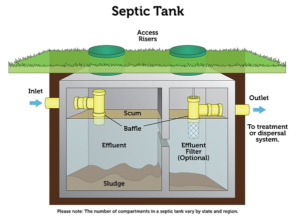The gutter system is one of the most important components of a home, but it’s often overlooked. It channels rainwater away from the foundation and structure, protecting the home from costly water damage.
Cleaning your gutters isn’t exactly a fun chore, but it is essential to the health of your home. Identifying and repairing issues with your gutters early on will save you money in repairs down the road. Contact Gutter Repair Baltimore now!

Gutters are often secured to fascia boards with a variety of items, including gutter spikes, screws, and brackets. Over time, these fasteners can become loose and will need to be reattached. In addition, some fasteners might need to be replaced if they have been stripped. Gutters that are secured with metal fasteners are more likely to experience loosening over time due to the expansion and contraction of the gutter materials.
The type of material used for gutters can also impact the likelihood that they will become loose. For example, copper gutters are very durable and can withstand extreme weather conditions, while vinyl gutters may be more susceptible to loosening from expanding and contracting as they age.
Incorrect installation of the gutters is another factor that can lead to them becoming loose. The gutters should be installed with a slight downward slope to ensure that rainwater is directed down and away from the home. When gutters are not installed correctly, the water can build up and cause damage to the house and the foundation.
If you have noticed that your gutters are leaking, it is important to have them repaired as soon as possible. Water that seeps through your gutters can cause water damage to the interior and exterior of your home as well as to your roof. This can result in expensive repair and replacement costs, as well as rotting wood and other structural issues.
Another sign that your gutters are loose is when they have a noticeable bowing or sagging. This can occur when the gutters are overloaded with debris or if they have not been properly installed. Gutter expansion and contraction can also cause the gutters to bow and sag over time.
The best way to prevent gutter problems, such as loosening, is through regular maintenance and proper care. Gutter cleaning and regular inspections can help prevent the build-up of debris that can lead to blockages and leaks. In addition, choosing high-quality gutters and implementing preventive solutions, such as gutter guards, can improve the longevity and functionality of your gutter system.
Cracks or Holes
If you’ve noticed water damage to your home or landscaping from gutter overflow, it could be a sign that it’s time for a gutter repair. Gutter overflow is often caused by holes or cracks in the gutter system that allow water to escape, causing damage. You can usually repair these problems with caulk or glue, but larger holes and cracks will require a gutter replacement.
Cracks and holes can be caused by erosion, physical damage, or weather conditions. These can be hard to spot since they can form over time. If you notice them, it is a good idea to take a ladder up and have a close look at the area.
Small cracks and holes can be repaired with silicone sealant, which is easy to apply with a putty knife and smooths out easily. Make sure to clean the area around the hole before applying the sealant to ensure a waterproof and watertight seal.
A gutter that has a hole can cause water to spill over the sides and overflow, resulting in damage to your roof and fascia, as well as your landscaping. You can usually prevent this problem by securing the gutters securely and cleaning them out regularly.
Gutters that have been installed incorrectly or have sagged over time can also cause overflow and leaks. This is usually a result of an alteration in the natural slope of the gutters, which is responsible for channeling water down and away from your home’s facade. It’s usually a simple matter of re-hanging the gutter sections to reestablish the proper slope.
It’s a good idea to use a ladder that is both sturdy and well-secured when working on gutter repairs. Wearing safety goggles and gloves will help you work safely. It’s also a good idea to check the ground near the gutter for any nails or screws that have worked loose and fallen on the ground. If you find any, it’s a good idea to replace them with standard gutter screws to prevent them from coming loose again in the future. You should also be sure to check the downspouts and make sure they are secure.
Nails or Screws
If your gutter system is older and you are seeing nails and screws popping up around the house it could be time to replace them. This is an indicator that the metal is starting to deteriorate and that rust will eventually start seeping beneath the surface, causing further damage and moisture problems.
It is important to use the right kind of nail or screw for your project. Nails are stronger but they can also split wood so it’s important to take into account your context and the type of work you’re doing when choosing a fastener. Screws tend to be more flexible so they are better for projects that involve bending or twisting and can keep your gutters strong even if they’re subjected to a lot of movement.
Gutter spikes were once a popular way of hanging gutters but they are now being replaced by fascia hanger brackets because they offer a lot more stability. You can easily replace the spikes with these brackets by simply hooking them on to the lip of the gutter and screwing them to the fascia. The brackets are designed to hold a heavier load than spikes so they are less likely to come loose over time and also have a more attractive look than spikes do.
If you notice that your downspout is coming loose from the side of your home it may be because the strap that connects the downspout to the gutter is missing. This strap carries all the water from the gutter to the downspout outlet and keeps it securely attached. Check the strap to make sure it is still in place and if it isn’t then you can reattach it by using sheet metal screws that are specially made for gutters. The heads on these screws are specifically designed to be more durable and the head stays away from the edge of the gutter so that the screw doesn’t rust.
If you find that the hole in your gutter is large enough to allow rainwater to escape, you can patch the holes with flashing. This is a simple fix that requires no professional help but it’s important to ensure the flashing you use is compatible with your gutters. Different types of metal have different electrode potentials so using the wrong metal can cause galvanic corrosion. This is where one metal corrodes the other when they touch, usually creating a black stain that looks bad and can lead to structural damage.
Rust
Gutter systems keep water away from the roof and foundation of your house, protecting it from damage. However, over time gutters can be damaged by a variety of things, including rust. The main reason for this is that metal gutters are exposed to a lot of oxygen, which causes them to oxidize and eventually form rust. This can be bad for your gutters, as rust is not only unsightly but it can also cause holes in the system that allow rainwater to leak into the home.
Gutter rust can affect any kind of gutter, even though it is most common with aluminum. This is because of the way that aluminum reacts with different elements. Gutter rust is also made worse by the fact that aluminum can be susceptible to galvanic corrosion, which occurs when dissimilar metals touch each other. This can happen when copper gutters are used with aluminum hardware, or when steel gutters are used with aluminum gutters. Gutter rust is also made worse when temperatures fluctuate, as this can cause the metal to break down faster than it should.
The good news is that if you catch a rusted section of your gutters early, it may be possible to repair it. This involves scrubbing off the rust with a wire brush and then coating it with a metal primer designed to inhibit rust. However, this solution is only a temporary one as the rust will continue to spread through the aluminum gutters.
Ultimately, the only permanent fix for rusted sections of your gutters is to replace them. If you see a lot of rust starting to appear in your gutters, then it is likely that the sections have already corroded and become too weak to support your gutters. The best way to avoid this problem is to ensure that your gutters are regularly cleaned and maintained. This will not only help to protect them from rust, but it will also extend their lifespan and prevent other types of damage. A poorly-functioning gutter is a big risk to your home and needs to be repaired as soon as you notice any issues.


